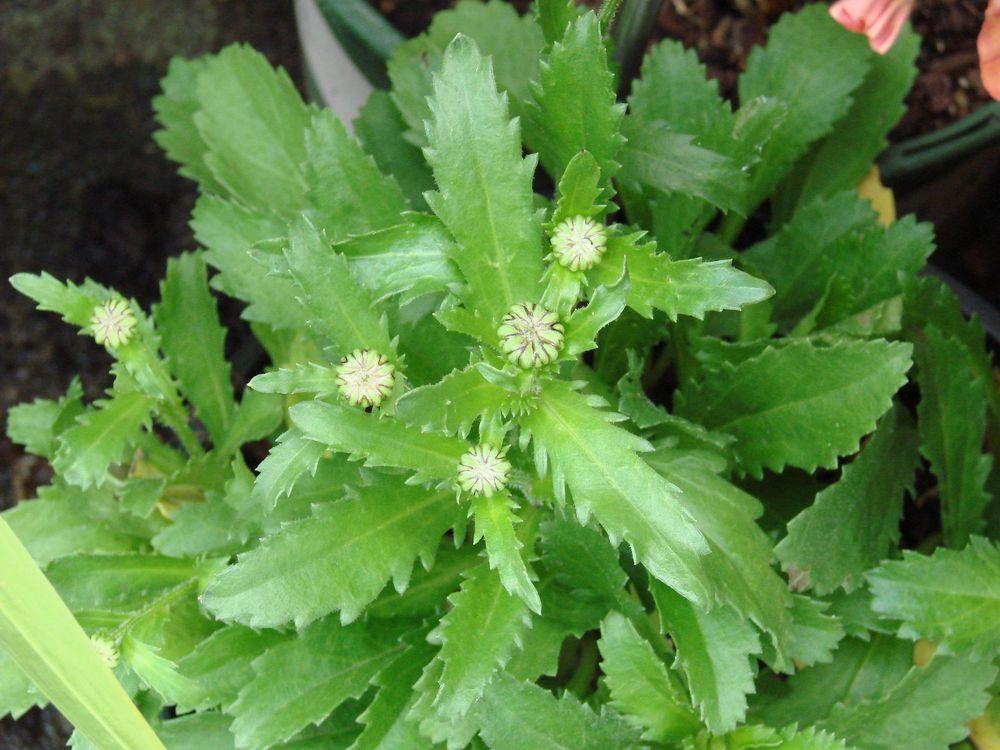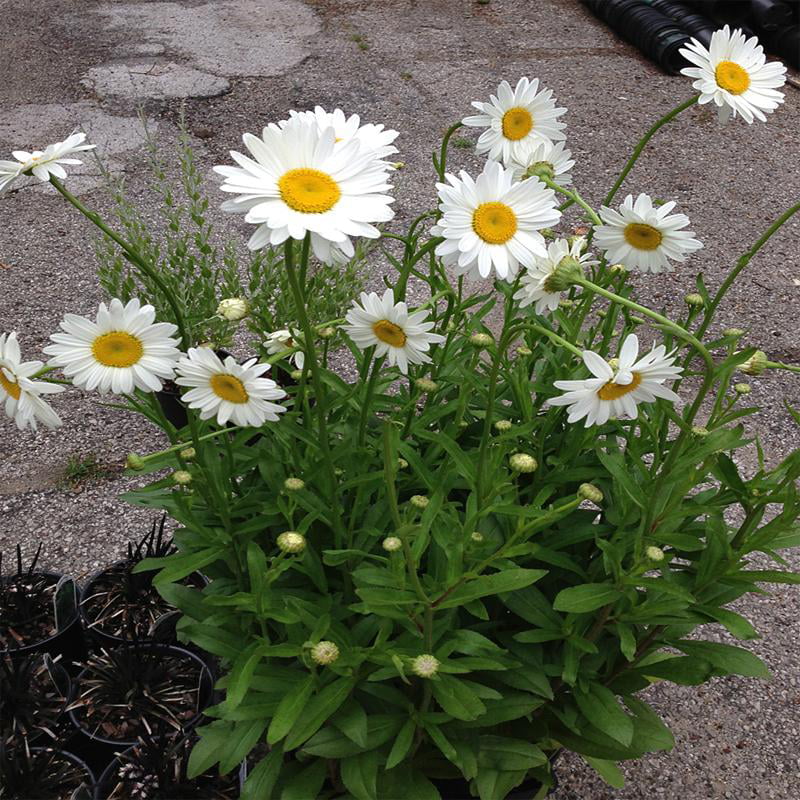
Photo of the closeup of buds, sepals and receptacles of Shasta Daisy
Minimum of 500 mg per packet (about 600 seeds). Productive - Shasta Daisy germinates in 15-21 days when soil temps are 70°F. Plant 1/8" deep and space 12-18" apart in an area with full sunlight. This variety will grow 2-4' tall with a spread of 1-2'. Flowers will mature in 150-300 days, plant in USDA zones 4-9.

Shasta Daisy "Alaska" Orchids, Plants, Shasta
Plant Shasta daisies in full sun to light shade in well-drained soil rich in organic matter. Good soil drainage is especially important in winter because damp and soggy soil around the root crown of the plant can lead to rot. When to plant: In spring or early summer, after the danger of frost has passed.

Shasta daisy the controlled variety! Plants, Shasta, Daisy
Shasta daisy is a vigorous perennial and benefits from an annual mulch of compost or manure, and a late winter/early spring feed with slow-release fertilizer. Support tall-growing varieties, ideally with grow-through supports put in place during spring that quickly become hidden. Either buy ready-made ones, make your own from canes and string.

Shasta Daisy Plants, Outside living, Genealogy sites
Key Takeaways Shasta daisies can be susceptible to various diseases and pests, which can cause stunted growth, yellowing leaves, and even death. Common problems include powdery mildew, root rot, and aphids, which can be caused by improper watering, poor soil quality, and lack of sunlight.

Snowcap Leucanthemum Plants for Sale (Shasta Daisy) Free Shipping
Fertilizing: Shasta daisies benefit from regular feeding to ensure robust growth and abundant blooms. Use a balanced, slow-release fertilizer formulated for flowering plants. Apply the fertilizer according to the manufacturer's instructions, usually once every four to six weeks during the growing season.

Shasta Daisy Plants, Shasta, Daisy
Nadia Hassani Updated on August 3, 2023 In This Article View All Where to Plant Planting Tips Care Pests and Problems Propagation Easy, always fresh, and always eye-catching, Shasta daisy is a longtime garden favorite.

Pin on Fla fla flowers
Shasta daisy Alaska 'Alaska' Shasta daisy is a bit shorter, topping out at just 2 or 3 feet tall. The strong stems don't need to be staked. While all Shasta varieties are drought-tolerant, I find this variety to be particularly tolerant of dry conditions. Full sun is best since the plants can get a little floppy in shadier conditions.

Prickly and Bitter I hasta have this Shasta Daisy!
The plant is a hybrid that was developed by Luther Burbank in 1901. While some daisies come in a variety of colors, most Shasta Daisy colors are limited to white petals with a yellow center and dark green glossy leaves. (There are a few with yellow petals, too.)

shasta daisy foliage Plant identification, Plant leaves, Plants
Watering: Provide an average amount of water. Soggy soil can lead to root rot. Shasta daisy is moderately drought tolerant once established. Water more frequently during prolonged heat or dry spells. Fertilizing: In spring, spread a thin layer of compost around the base of plants or apply a slow-release all-purpose fertilizer.

Leucanthemum x superbum (Shasta Daisy) North Carolina Extension
Shasta daisy, also known as Leucanthemum x superbum, is a powerful herbal remedy. Native to Europe, this plant has been used for medicinal purposes since ancient times. Its leaves are brewed into teas and tinctures to reduce inflammation, while its root can be consumed to reduce fever and act as a digestive aid.

Becky Shasta Daisy Plant, White Summer Flowers, Live Perennial for
Soil Keep soil moderately rich and fertile so that these flowers bloom. Shasta Daisies are not too particular about soil conditions, as they can survive in rich soil or soil with organic matter or compost. Soil should be well-drained because these flowers do not tolerate soggy soil.

Shasta Daisy, Alaska Hometown Seeds
To start shasta daisy seeds indoors: Fill seed trays or small pots with a well-draining seed-starting mix. Sow the seeds on the surface of the mix and lightly cover them with a thin layer of soil. Keep the soil consistently moist but not soggy, and maintain a temperature of around 65-70°F (18-21°C).

Pin on Gardening Flowers, Roses and Plants
Root Rot Another reason why Shasta daisies turn brown is root rot. Root rot is caused by a fungus that thrives in wet soil and can cause the roots to rot. Symptoms of root rot include brown leaves, wilting, and stunted growth. To prevent root rot, make sure the soil is well-draining and avoid overwatering.

Shasta Daisy Daisy, Gardening, Plants, Margarita Flower, Lawn And
Shasta daisy is a member of the Asteraceae or aster family, a group noted for its starburst-shaped flowers. Plants in the Leucanthemum genus are native to Europe and Asia, but the Shasta daisy itself is American. Developed near snowy Mount Shasta in Northern California, Shasta daisies are the result of a quadruple hybrid cross.

Photo of the leaves of Shasta Daisy (Leucanthemum 'Real Glory') posted
Shasta daisies are one of the easiest perennials to grow. They prefer, but do not necessarily need, moist yet well-drained soil. Fertilize monthly with a granular fertilizer like Osmocote, and liquid-feed weekly if desired.

Longlasting Shasta Daisies brighten the summer garden
Shasta daisies' yellowing leaves might indicate a number of different problems. Lack of certain nutrients, notably iron, is one possible reason. Chlorosis, a disease where the veins are green but the leaves are yellow, may result from a lack of iron. It's crucial to provide the plant the right nourishment, which includes a micronutrient.